Yanan Ma
CAST: Corpus-Aware Self-similarity Enhanced Topic modelling
Oct 19, 2024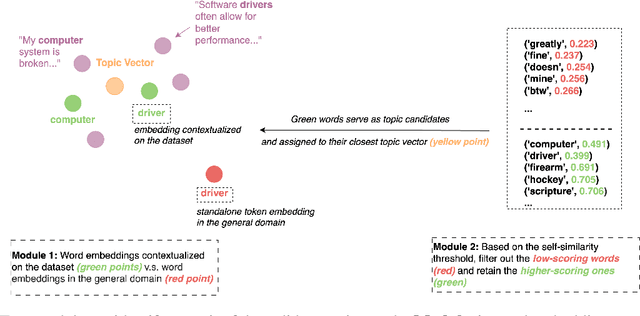

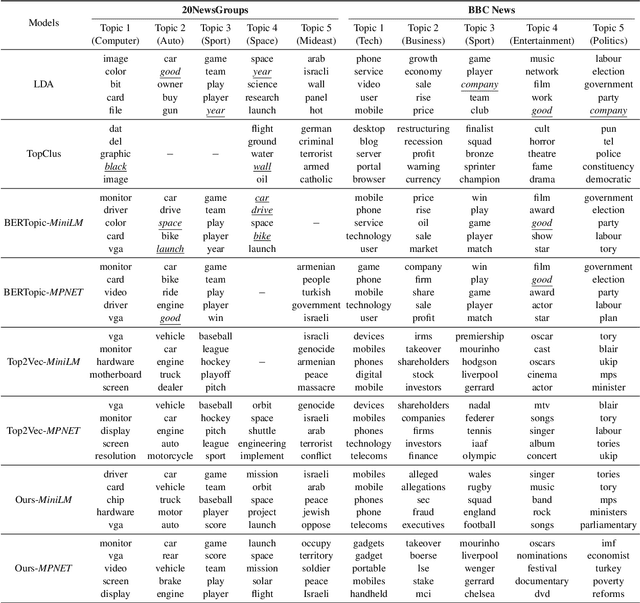
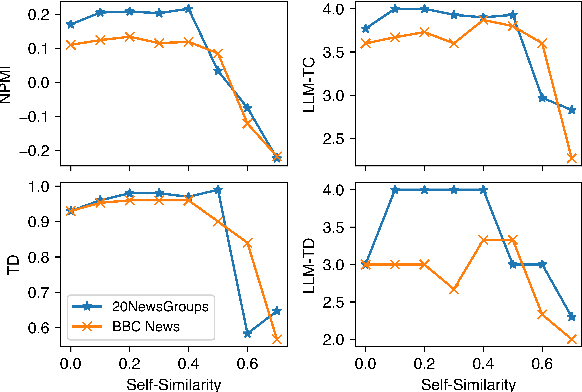
Abstract:Topic modelling is a pivotal unsupervised machine learning technique for extracting valuable insights from large document collections. Existing neural topic modelling methods often encode contextual information of documents, while ignoring contextual details of candidate centroid words, leading to the inaccurate selection of topic words due to the contextualization gap. In parallel, it is found that functional words are frequently selected over topical words. To address these limitations, we introduce CAST: Corpus-Aware Self-similarity Enhanced Topic modelling, a novel topic modelling method that builds upon candidate centroid word embeddings contextualized on the dataset, and a novel self-similarity-based method to filter out less meaningful tokens. Inspired by findings in contrastive learning that self-similarities of functional token embeddings in different contexts are much lower than topical tokens, we find self-similarity to be an effective metric to prevent functional words from acting as candidate topic words. Our approach significantly enhances the coherence and diversity of generated topics, as well as the topic model's ability to handle noisy data. Experiments on news benchmark datasets and one Twitter dataset demonstrate the method's superiority in generating coherent, diverse topics, and handling noisy data, outperforming strong baselines.
Multi-periodicity dependency Transformer based on spectrum offset for radio frequency fingerprint identification
Aug 14, 2024Abstract:Radio Frequency Fingerprint Identification (RFFI) has emerged as a pivotal task for reliable device authentication. Despite advancements in RFFI methods, background noise and intentional modulation features result in weak energy and subtle differences in the RFF features. These challenges diminish the capability of RFFI methods in feature representation, complicating the effective identification of device identities. This paper proposes a novel Multi-Periodicity Dependency Transformer (MPDFormer) to address these challenges. The MPDFormer employs a spectrum offset-based periodic embedding representation to augment the discrepency of intrinsic features. We delve into the intricacies of the periodicity-dependency attention mechanism, integrating both inter-period and intra-period attention mechanisms. This mechanism facilitates the extraction of both long and short-range periodicity-dependency features , accentuating the feature distinction whilst concurrently attenuating the perturbations caused by background noise and weak-periodicity features. Empirical results demonstrate MPDFormer's superiority over established baseline methods, achieving a 0.07s inference time on NVIDIA Jetson Orin NX.
Optimization for Reflection and Transmission Dual-Functional Active RIS-Assisted Systems
Sep 05, 2022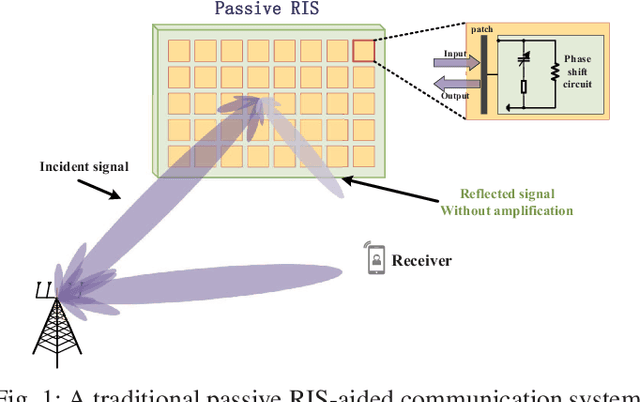
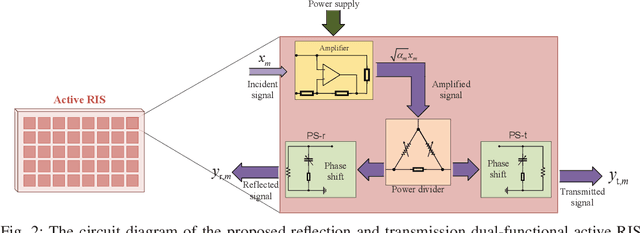
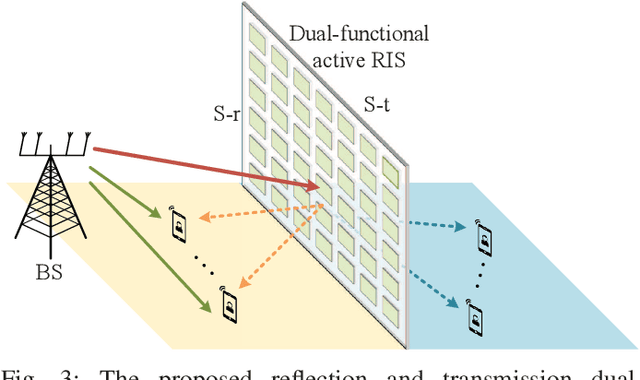
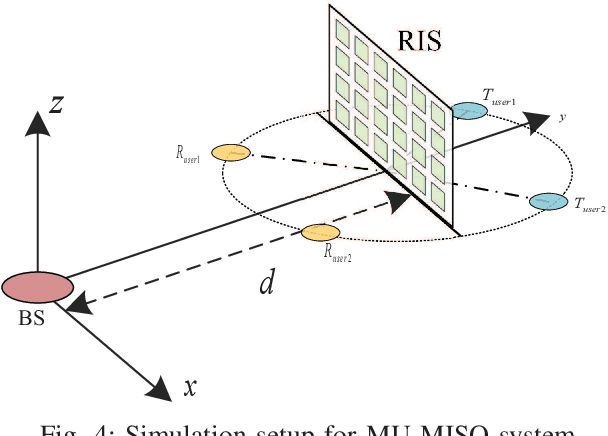
Abstract:Reconfigurable intelligent surface (RIS) has been deemed as one of potential components of future wireless communication systems because it can adaptively manipulate the wireless propagation environment with low-cost passive devices. However, due to the severe double path loss, the traditional passive RIS can provide sufficient gain only when receivers are very close to the RIS. Moreover, RIS cannot provide signal coverage for the receivers at the back side of it. To address these drawbacks in practical implementation, we introduce a novel reflection and transmission dual-functional active RIS architecture in this paper, which can simultaneously realize reflection and transmission functionalities with active signal amplification to significantly extend signal coverage and enhance the quality-of-service (QoS) of all users. The problem of joint transmit beamforming and dual-functional active RIS design is investigated in RIS-enhanced multiuser multiple-input single-output (MU-MISO) systems. Both sum-rate maximization and power minimization problems are considered. To address their non-convexity, we develop efficient iterative algorithms to decompose them into separate several design problems, which are efficiently solved by exploiting fractional programming (FP) and Riemannian-manifold optimization techniques. Simulation results demonstrate the superiority of the proposed dual-functional active RIS architecture and the effectiveness of our proposed algorithms over various benchmark schemes.
Reflection and Relay Dual-Functional RIS Assisted MU-MISO Systems
Jul 24, 2021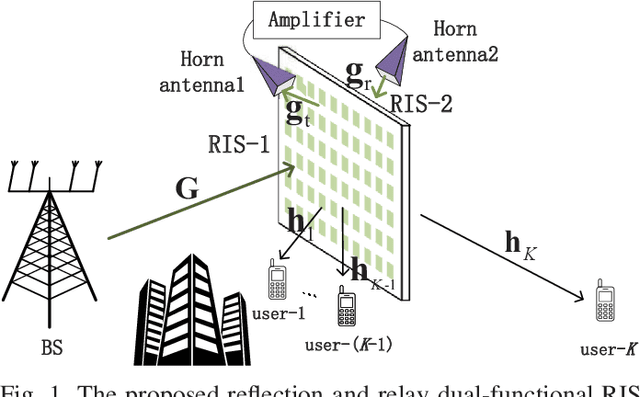

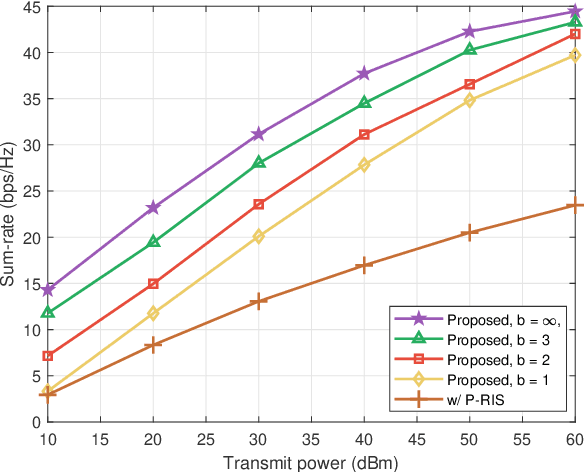
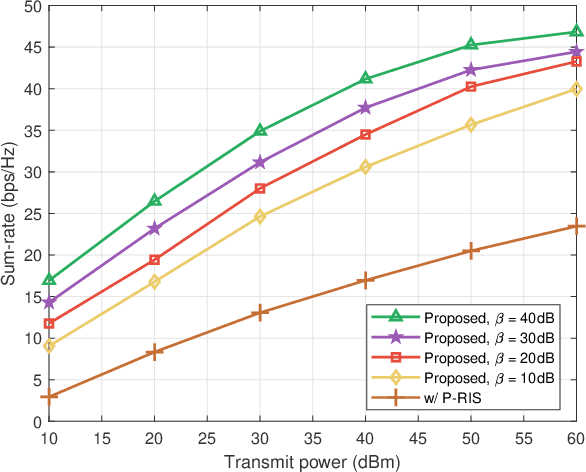
Abstract:Reconfigurable intelligent surfaces (RISs) have been deemed as one of potential components of future wireless communication systems because they can adaptively manipulate the wireless propagation environment with low-cost passive devices. However, due to double fading effect, the passive RIS can offer sufficient signal strength only when receivers are nearby and located at the same side as the incident signals. Moreover, RIS cannot provide service coverage for the users at the back side of it. In this paper we introduce a novel reflection and relay dual-functional RIS architecture, which can simultaneously realize passive reflection and active relay functionalities to enhance the coverage. The problem of joint transmit beamforming and dual-functional RIS design is investigated to maximize the achievable sum-rate of a multiuser multiple-input single-output (MU-MISO) system. Based on fractional programming (FP) theory and majorization-minimization (MM) technique, we propose an efficient iterative transmit beamforming and RIS design algorithm. Simulation results demonstrate the superiority of the introduced dual-functional RIS architecture and the effectiveness of the proposed algorithm.
 Add to Chrome
Add to Chrome Add to Firefox
Add to Firefox Add to Edge
Add to Edge